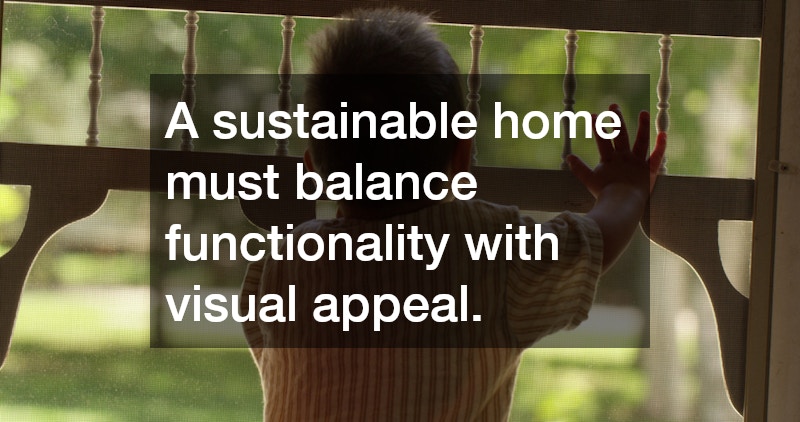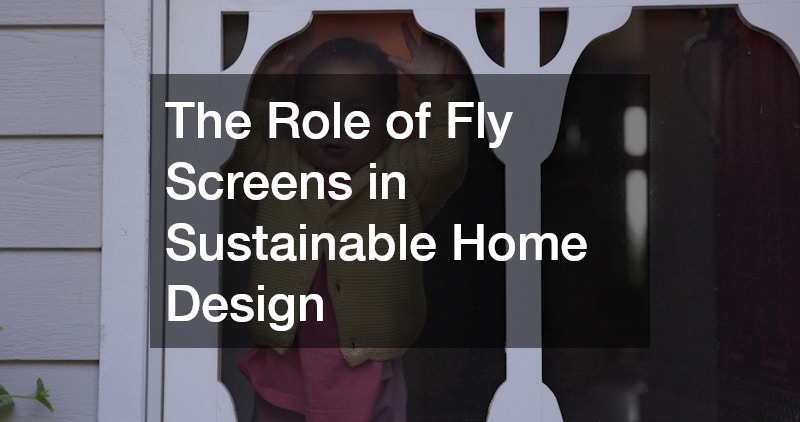Creating a sustainable home involves more than selecting eco-friendly materials or installing solar panels. It also requires practical features that improve everyday living while reducing environmental impact. One often overlooked yet highly effective feature in sustainable design is the fly screen. Beyond keeping insects out, this simple addition offers long-term benefits for ventilation, comfort and energy efficiency.
Sustainable living is not just about large-scale investments. Many small details, such as proper window coverings, door designs and air flow solutions, contribute significantly to overall energy conservation.
These types of additions play a key part in enhancing passive design strategies, especially in homes that aim to function more efficiently without heavy reliance on artificial systems.
Natural Airflow & Reduced Energy Use
A key principle of sustainable home design is maximising natural ventilation. This reduces the need for mechanical cooling systems, cutting down on energy consumption. When windows and doors are open to encourage cross-ventilation, homeowners often worry about pests entering the home. This is where fly screens prove invaluable.
By allowing fresh air to circulate freely while keeping bugs and debris out, these barriers make it possible to keep indoor spaces cooler and more comfortable. This supports passive cooling, a design method that uses natural air movement to regulate temperature. By making it easier to rely on natural airflow, homes can reduce their use of fans, air conditioners and other power-hungry systems.
Even small reductions in daily electricity use can add up to significant environmental gains over time. Installing high-quality mesh systems across windows and external doors is a simple, low-maintenance solution that fits seamlessly into the goals of an energy-conscious household.
Indoor Health & Air Quality Improvements
Good air quality is vital in any home, particularly one designed with sustainability in mind. Poor ventilation contributes to mould growth, dust accumulation and respiratory issues. Allowing regular, controlled air exchange helps limit these problems and screen systems enable this process by allowing windows to remain open without inviting unwanted visitors indoors.
Screens act as a barrier that filters out leaves, insects and larger airborne particles while maintaining clear airflow. This can contribute to a healthier living environment, reducing reliance on artificial purifiers or treatments. When designing for sustainability, indoor health is a priority that works alongside energy savings and environmental responsibility.
Material Choices & Environmental Impact
Choosing the right materials for sustainable home design involves balancing durability, recyclability and overall environmental impact. Mesh panels are often made from aluminium, fibreglass or stainless steel, all of which offer long service life with minimal maintenance. When properly installed and cared for, these installations can last for many years without needing replacement, thereby reducing waste.
Aluminium and stainless steel are also recyclable, aligning with the principles of resource conservation. Homeowners seeking greener alternatives can also look into powder-coated frames, which offer enhanced resistance to corrosion without using solvent-heavy finishes. Fibreglass options are lightweight and resistant to UV exposure, making them a solid choice where weight and cost are considerations.
The environmental impact of these features is low compared to the benefits they provide. They require no ongoing energy to operate and are easy to clean using water and mild detergent, eliminating the need for harsh chemicals. Their passive role in boosting efficiency means they quietly contribute to the home’s environmental performance over many years.
Aesthetic Flexibility & Seamless Integration
A sustainable home must balance functionality with visual appeal. Screen systems are available in a wide variety of styles, colours and frame designs, allowing homeowners to integrate them without compromising appearance. Whether used in timber-framed homes, modern architectural builds or heritage restorations, they can be custom-fitted to suit almost any window or door opening.
Retractable options are also available, allowing for seamless views when not in use and a discreet presence when engaged. Magnetic and pleated designs offer alternatives to traditional hinged or sliding panels, accommodating homes with unique layout requirements or limited space.
With thoughtful placement and coordination, these barriers become an invisible yet essential part of a home’s sustainable strategy. Their versatility ensures they can adapt as part of broader design goals, supporting natural lighting, airflow and long-term comfort without obstructing views or architectural features.
In sustainable home design, it’s often the practical, everyday features that provide the most value over time. Fly screens represent one of those additions that, while modest in cost and appearance, can have a lasting impact on comfort, health and energy use. By facilitating natural ventilation, improving air quality and reducing the need for chemical pest deterrents, they help lower a household’s environmental footprint without demanding constant attention or upkeep.
Whether included in new builds or retrofitted into existing spaces, fly screens are a smart choice that supports greener living through subtle yet effective means. They show that sustainable design does not always require complex systems — often, simple elements offer the most dependable and lasting results.

